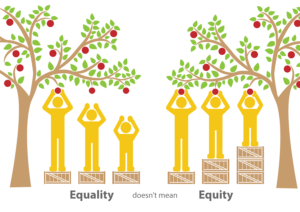“This isn’t just a medical challenge,” Kat Jones says. “It really does cross into a lot of social sectors.”

Credit: Design Institute for Health
This past January, the Texas Health and Human Services Commission (HHSC) announced plans to team up with The University of Texas at Austin’s Dell Medical School for a $15.5 million redesign of Austin State Hospital, one of five psychiatric hospitals selected for renovation across the state.
Playing a pivotal role in the project is the Design Institute for Health, a self-proclaimed “radical collaboration” between Dell Med and UT Austin’s College of Fine Arts that embraces human-centered approaches to problem-solving. On this week’s episode of Into the Fold, the Institute’s Director of Strategy & Mission(s), Kat Jones, explains how using design principles to orient mental health interventions can extend their reach beyond the walls of medical facilities and into the larger systems affecting well-being.
Reframing Mental Health Questions with Design
If your first thought at the mention of design is Ikea furniture and HGTV, Jones has something to tell you. “People always think about design as how it looks,” she says, “but we like to talk about the fact that design is also how it works.”
Consider your local clinic. While it is, indeed, a building—a system of aesthetic elements and mechanical parts—it also functions as a crossroads of patients, providers and the transactional services that bring them together. A design approach, the way Jones sees it, takes the focus off the fee-for-service transaction and retools it for “underlying human needs.”
To get beneath the surface of a supposedly single-sector problem (e.g., mental healthcare) and tap into its root causes, design research emphasizes empathy-driven data collection and iterative prototyping, or the repeated testing of preliminary models before major investments are made. This helps keep the research and development phase rapid, low-cost, and open to constant improvement—a process that better reflects and keeps pace with changes happening in community.
Instead of using quantitative methods to profile populations, design research operates “in context.” That might involve talking to people in their homes, visiting jails, sitting in on mental health courts or nonprofit board meetings—all the while listening, making observations, and identifying patterns.
“Once you get to some of those commonalities,” Jones says, “then you’re actually designing for the same thing across the complexity of the system.”
Creating a Hospital without Waiting Rooms
At the Austin State Hospital, Jones and her colleagues at the Design Institute for Health are leading a redesign effort that will not only transform facilities, but improve operations in the “larger continuum” of psychiatric services. The goal is to make the leap from a fee-for-service model of care to one of value-based care—creating outcomes “where people actually get better,” as Jones puts it.
Take for example their decision to eliminate waiting rooms at UT Health Austin Clinics. Although nowadays tattered magazines, poor lighting and hopelessly vague wait times seem like an inevitable part of visiting any healthcare provider, it’s easy to forget that they aren’t a necessity—and equally difficult to imagine a world without them.
“When you remove the waiting room,” Jones says, “you actually have to solve a cascade of other operational problems that actually improve the patient experience.” Removing the waiting room creates an impetus for adjusting services that once used it as a crutch—shifting more attention to the patient room, and more power into the patient’s hands.
In addition to service design, such a comprehensive project will involve policy changes, revisions of financial models, and groundwork for new language. That’s why, Jones tells us, effective design initiatives can never be accomplished without collaboration.
“You must come together,” she says. “None of us is as smart as all of us.”
Learn more about our podcast and check out other episodes!


